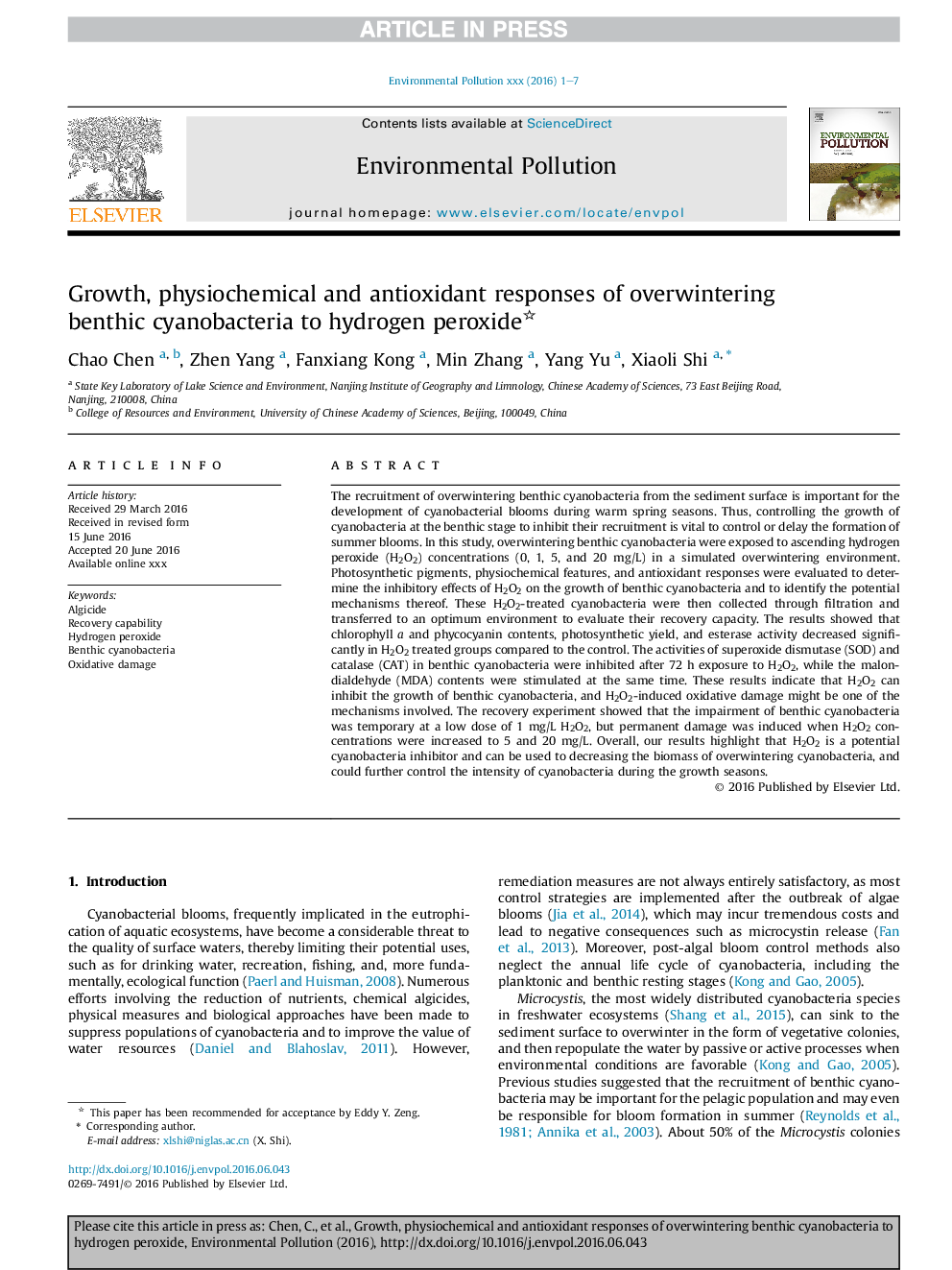| کد مقاله | کد نشریه | سال انتشار | مقاله انگلیسی | نسخه تمام متن |
|---|---|---|---|---|
| 8857839 | 1619154 | 2016 | 7 صفحه PDF | دانلود رایگان |
عنوان انگلیسی مقاله ISI
Growth, physiochemical and antioxidant responses of overwintering benthic cyanobacteria to hydrogen peroxide
ترجمه فارسی عنوان
رشد، پاسخهای فیزیولوژیک و آنتی اکسیدانهای سینوئیک باکتری های زمستان گذر به پراکسید هیدروژن
دانلود مقاله + سفارش ترجمه
دانلود مقاله ISI انگلیسی
رایگان برای ایرانیان
کلمات کلیدی
موضوعات مرتبط
علوم زیستی و بیوفناوری
علوم محیط زیست
شیمی زیست محیطی
چکیده انگلیسی
The recruitment of overwintering benthic cyanobacteria from the sediment surface is important for the development of cyanobacterial blooms during warm spring seasons. Thus, controlling the growth of cyanobacteria at the benthic stage to inhibit their recruitment is vital to control or delay the formation of summer blooms. In this study, overwintering benthic cyanobacteria were exposed to ascending hydrogen peroxide (H2O2) concentrations (0, 1, 5, and 20Â mg/L) in a simulated overwintering environment. Photosynthetic pigments, physiochemical features, and antioxidant responses were evaluated to determine the inhibitory effects of H2O2 on the growth of benthic cyanobacteria and to identify the potential mechanisms thereof. These H2O2-treated cyanobacteria were then collected through filtration and transferred to an optimum environment to evaluate their recovery capacity. The results showed that chlorophyll a and phycocyanin contents, photosynthetic yield, and esterase activity decreased significantly in H2O2 treated groups compared to the control. The activities of superoxide dismutase (SOD) and catalase (CAT) in benthic cyanobacteria were inhibited after 72Â h exposure to H2O2, while the malondialdehyde (MDA) contents were stimulated at the same time. These results indicate that H2O2 can inhibit the growth of benthic cyanobacteria, and H2O2-induced oxidative damage might be one of the mechanisms involved. The recovery experiment showed that the impairment of benthic cyanobacteria was temporary at a low dose of 1Â mg/L H2O2, but permanent damage was induced when H2O2 concentrations were increased to 5 and 20Â mg/L. Overall, our results highlight that H2O2 is a potential cyanobacteria inhibitor and can be used to decreasing the biomass of overwintering cyanobacteria, and could further control the intensity of cyanobacteria during the growth seasons.
ناشر
Database: Elsevier - ScienceDirect (ساینس دایرکت)
Journal: Environmental Pollution - Volume 219, December 2016, Pages 649-655
Journal: Environmental Pollution - Volume 219, December 2016, Pages 649-655
نویسندگان
Chao Chen, Zhen Yang, Fanxiang Kong, Min Zhang, Yang Yu, Xiaoli Shi,
